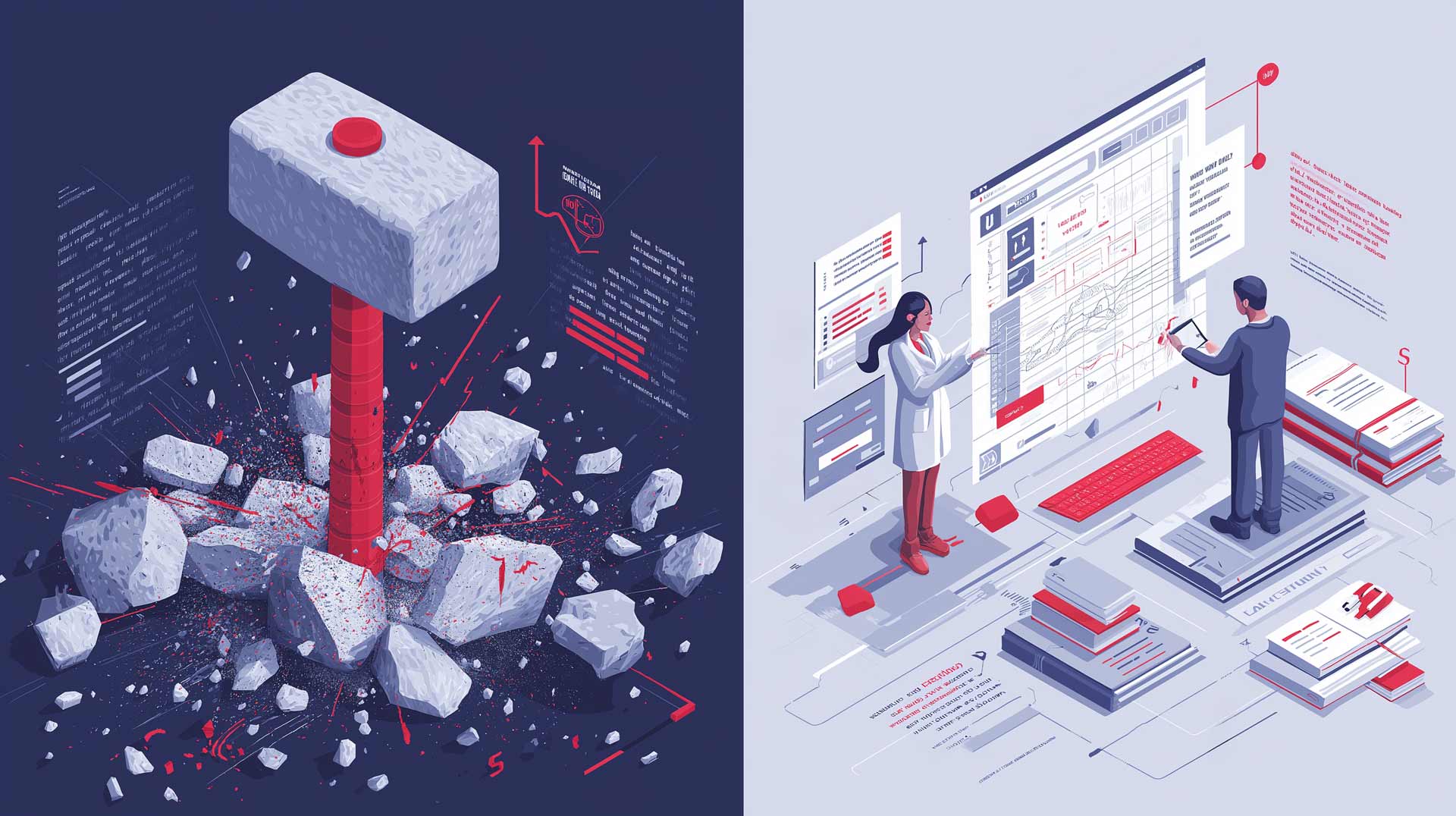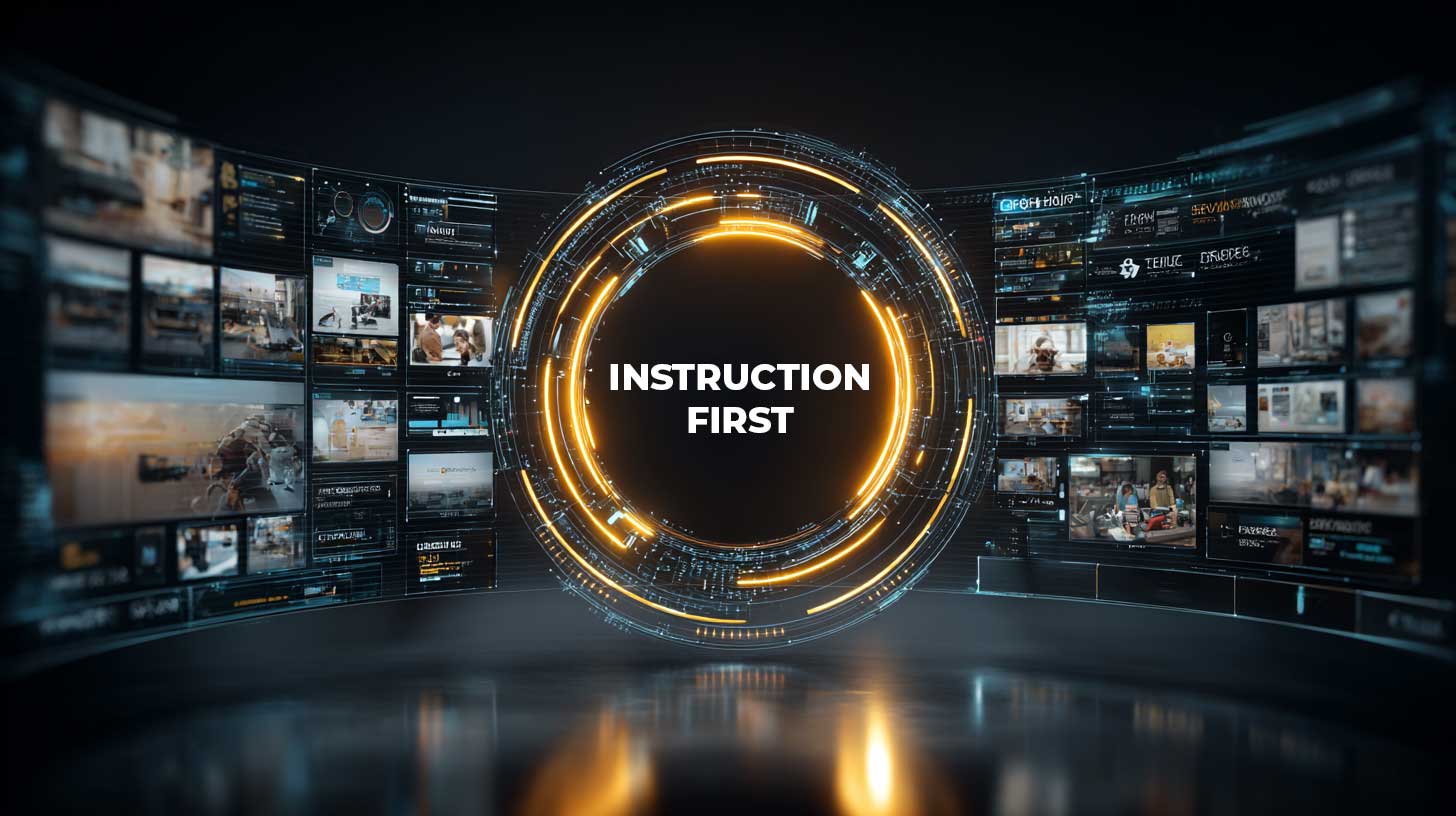5 min read
EdTech ROI: The Missing Link Is Instructional Design
 Karen Vieth
:
Nov 3, 2025 8:00:04 AM
Karen Vieth
:
Nov 3, 2025 8:00:04 AM

The ROI + Engagement Gap
in L&D Technology
According to Josh Bersin in Learning Technologies, only 19% of L&D leaders believe their technology is fully optimized for employee experience (Learning Technologies). That means more than four out of five organizations are investing in tools that don’t deliver the learner experience executives expect — a direct hit to both engagement and ROI. When we talk about EdTech, we mean the platforms, apps, and tools that power today’s learning programs — from LMS's to collaboration and video software. This gap reflects a deeper problem with ROI in L&D technology.
Draft research from InSync also shows that organizations frequently spend millions on platforms that end up underutilized, with leaders reporting as much as 30–40% of tech functionality going unused. This isn’t just wasted budget. It reflects a deeper design problem that limits measurable business impact.
Despite billions spent on new platforms, many L&D leaders struggle to prove impact. When we say technology is not “optimized for employee experience,” we mean it often fails to provide the right type of interaction at the right moment. For example, a platform might make content available but offer no way to practice new skills. Or it may enable collaboration, but not reflection. The issue isn’t the technology itself — it’s the missing step of instructional treatment.
KEY TAKEAWAYS
- Most learning tech fails to deliver ROI — only 19% of leaders believe tools are optimized for employee experience, showing how underused EdTech drains budgets
- Design-first beats tech-first — starting with outcomes and treatment approaches avoids the trap of defaulting to familiar tools
- Instructional design vs. instructional treatment matters — design is the full process, while treatment is the delivery approach that secures or loses ROI in L&D technology
- Leaders must redirect conversations — when clients or stakeholders ask for a specific tool (“we need a Zoom”), shift focus back to objectives and engagement
- Check your toolbox, don’t just buy new tech — evaluate whether current platforms enable knowledge transfer, practice, collaboration, and mindset shift
Why Tech-First Fails in Hybrid Learning
Too often, technology decisions drive learning strategy instead of supporting it. Leaders buy tools first and design later. The result? Tools are mismatched to objectives, and learners disengage.
Consider this example: A company invested heavily in a new LMS built for collaboration. But the real goal was customer conversation practice. The platform couldn’t support it, leaving learners disengaged and the organization frustrated with wasted time and budget.
In fact, most learning technology fails to deliver ROI. Remember, Bersin’s analysis shows only 19% of leaders believe tools are optimized for experience and InSync’s research indicates that nearly half of L&D leaders cite “misaligned platforms” as a top reason for weak ROI in virtual and hybrid learning programs. This misalignment explains why platforms fall short.

(As highlighted in this article on outsourcing virtual training services, ROI is less about the tool itself and more about whether design choices enable results.)
Instructional Design vs. Instructional Treatment: The Design-First Solution
Instructional design is the overall process of analyzing needs, creating objectives, designing, developing, and evaluating learning experiences. Within that larger process sits instructional treatment, the specific choices about delivery methods and technologies.
Treatment is where designers decide what learners need: knowledge transfer, practice, collaboration, or reflection. Then they match those needs to the right formats and tools. Without this step, even advanced platforms underperform. Instructional treatment choices are where ROI in L&D technology is either secured or lost.
Research findings reinforce this: programs that embed treatment decisions into design show up to 25% higher learner engagement scores compared to those that don’t. Treatment also connects directly to the InQuire Engagement Framework™. By planning for emotional, intellectual, and environmental engagement, leaders ensure that learning isn’t just delivered, but that it’s absorbed and applied.
 How Design-First Thinking Drives ROI and Engagement
How Design-First Thinking Drives ROI and Engagement
When treatment guides design, tools serve their purpose instead of dictating it. Engagement improves, learning outcomes strengthen, and executives see measurable value.
Too often we default to the tool in front of us (the LMS everyone knows, the platform already licensed) because it feels easy and familiar. It’s the old “when you have a hammer, everything looks like a nail” problem. But that’s the opposite of a design‑first approach, where we start with outcomes and strategy rather than convenience.
The design‑first approach can be summarized this way:
- Define the outcome — State clearly what learners must do, and how success will be measured
- Choose the right treatment approach — Decide whether the goal requires knowledge transfer, practice, collaboration, or mindset shift, and then select delivery methods that match
- Plan for engagement — Apply the InQuire Engagement Framework™ to build emotional, intellectual, and environmental connections
- Select technology last — Choose the tool that enables the chosen treatment approach, rather than letting the tool dictate the method (this can be hard to sell!)
Clients often arrive saying they “need a Zoom” or “create a video.” Requests like these limit the design. Be prepared to have a conversation that shifts focus back to objectives and outcomes before defaulting to a tool.
This design-first approach aligns directly with ROI. As discussed in our article on AI in instructional design, emerging technologies are most effective when guided by clear design principles.
Practical Tools for L&D Leaders
Leaders need a quick way to assess whether tech matches the objectives in both virtual classrooms and hybrid learning environments. Use this checklist to guide decisions, and remember, not every tool needs to do everything. The goal is to select the right mix that covers your objectives without overbuying features you don’t need.
When evaluating your current toolbox, ask:
- Does this tool enable knowledge transfer? If yes, how will it deliver content in a way learners can absorb?
- Example: an LMS with strong search and microlearning support
- Does it enable practice? If not, what other tool can fill that gap?
- Example: a simulation platform or role-play breakout in a virtual classroom
- Does it enable collaboration? Why does that matter for this objective?
- Example: whiteboards, shared docs, or chat-enabled platforms
- Does it enable mindset shift? How will it support reflection and perspective change?
- Example: facilitated discussion groups or storytelling activities
The Challenge: Integrating Classic Instructional Design with Modern Technology
The move from traditional classrooms to hybrid work and hybrid learning has reshaped how L&D professionals approach both design and delivery. Flexibility is no longer optional—training must keep pace with rapidly advancing technology while still grounding itself in proven instructional design principles.
This constant evolution leaves many learning leaders asking: How do we create training that’s both effective and engaging in hybrid and remote settings?
For a deeper dive into this challenge, our eBook Modern Strategies for Classic Instructional Design explores practical ways to combine timeless instructional methods with modern tools. It outlines strategies to help organizations design hybrid learning experiences that are inclusive, engaging, and results-driven.
 Solving the ROI + Engagement Gap with the Design Navigator™
Solving the ROI + Engagement Gap with the Design Navigator™
The InSync Design Navigator™ helps designers align objectives, instructional treatment, engagement, and technology. Instead of wasting resources on mismatched platforms, the Navigator provides a practical framework for making design-first decisions that improve both learner experience and business outcomes.
Closing the Gap in Virtual & Hybrid Learning
Only 19% of leaders believe their tech is optimized for learner experience. That proves the ROI gap. The solution isn’t more tools, it’s applying instructional treatment before making decisions.
With the right treatment, engagement improves, objectives are met, and executives finally see the ROI they demand. Now is the time to design smarter and close the gap between technology and results. The only way to achieve ROI in L&D technology is by starting with instructional design.
SEE THE InSync Design Navigator™ IN ACTION
-
Get a First Look at the InSync Design Navigator™
Join our upcoming session Design Smarter: Solving L&D’s Tech ROI Problem with the Design Navigator Prototype and be among the first to see how it will change the way you design learning.The full version of the InSync Design Navigator™ is coming soon and this webinar is your front-row seat to its debut!


